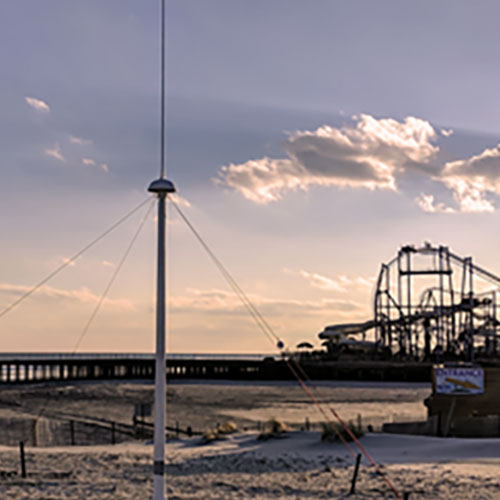
Links
- Surface Current Viewer
- Surface Current Viewer – Bistatic
- Surface Current Viewer – UGOS-3/Yucatan
- HFR Publications
- Radial Diagnostic Page
- HFR Operator Resources
- Mid Atlantic Surface Current Product (6 km) ERDDAP Status Page
- Animation of surface currents
- Animation of virtual surface drifters
- NOAA Press Release
- Google Earth KMZ
- Map of Rutgers High Frequency Radar Stations
- MARACOOS Supporting Maritime Commerce and Safety
- Codar Data
- How Does HF Radar Work?
CURRENT PROJECTS
- Measuring Surface Currents and Waves in Mid-Atlantic Coastal Waters
- Mid-Atlantic MBON: Dynamic Biodiversity and Telemetry Data for a Changing Coast
Ship Detection Maintenance for Rutgers 5 MHz HF Radar Sites
PAST PROJECTS
Overview
High Frequency (HF) Radar is used by ocean researchers to measure surface current velocity fields over the coastal ocean. An HF-radar system can measure surface currents with a spatial resolution of 1-6 km with a maximum range of 200 km. The higher spatial resolution, the lower the range. Currents are acquired every hour. All the HF-Radars used in the Mid-Atlantic are the SeaSonde manufactured by Codar Ocean Sensors.
The HF-Radars, like police radars, measure the speed of something moving toward or away from them. Instead of cars, HF-Radars measure the speed of the ocean surface. With two antennas, scientists can determine the speed and direction (N, S, E, W) of currents in multiple areas, and generate maps of the ocean surface using arrows to show the current direction.
